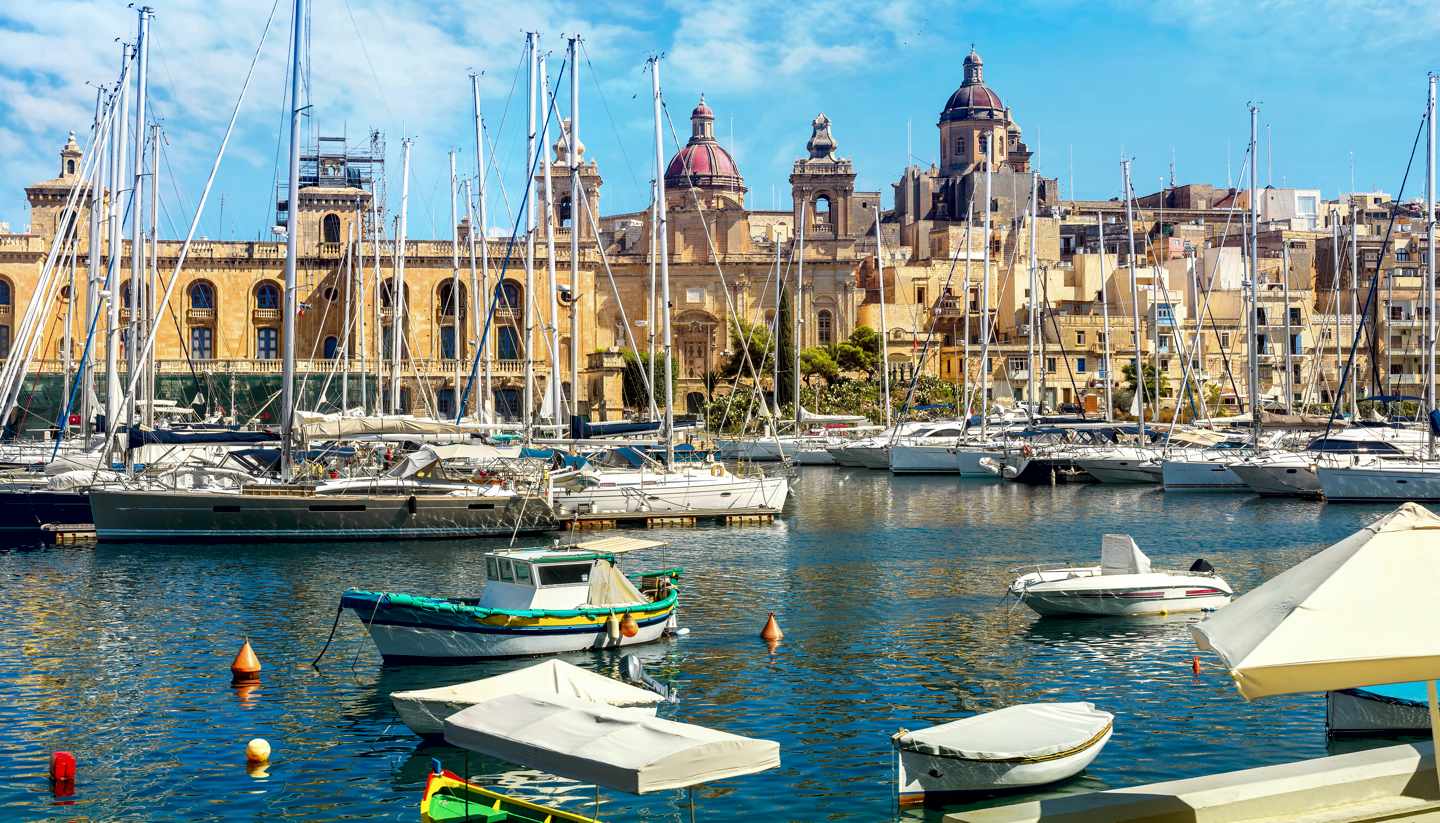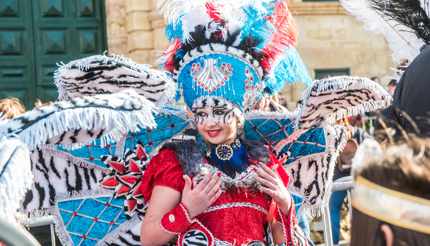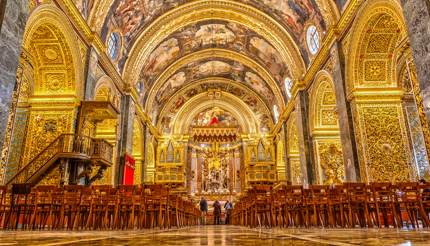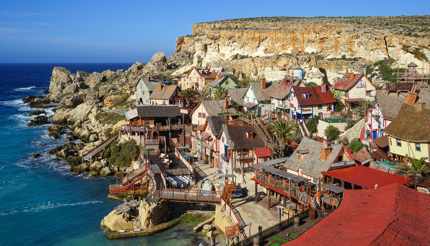A well-preserved fortified city with magnificent sea views and profound history, Valletta is an ideal city-break holiday destination in Europe
Set at the crossroads of the Mediterranean, the tiny Valletta is packed with a sizeable cultural punch. Here, atmospheric alleyways link baroque palazzi with hipster-cool bars and restaurants. Dreamy balconies cling to honey-coloured buildings that have barely changed for centuries. Built by the Knights of St John in the 1500s, this UNESCO-listed city is endlessly fascinating. So put on a good pair of walking shoes and explore this gem of the Med, which is also the European Capital of Culture in 2018.
When to go
Spring (March to May) is sunny and warm. Rain becomes less frequent as the season progresses. By May, rain is pretty rare while average high temperatures reach a balmy 23°C (73 °F); this is the optimal season to visit.
Summer (June to August) is characterized by a typical Mediterranean summer – hot and sunny. Temperatures tend around 30 °C (86 °F) but sea breezes temper the heat a bit, making it a pleasant time to enjoy a string of summer festivals.
Autumn (September to November) begins with high temperatures, with September feeling much like summer and October averaging 21ºC (70 ºF). This is a good time to visit as the summer crowds have gone home and the weather is still pleasant.
Winter (December to February) is relatively mild, but December is the wettest month. Exceptionally cold days are rare and it never snows or freezes.
Getting around
Unlike other old European cities, Valletta was designed and built on a grid system, making it very easy to navigate. Considering its size (less than 1 sq km or 0.4 sq miles) the city is best explored on foot.
If you’re venturing out to surrounding areas, such as the nightlife enclave of Paceville or the time-trapped Mdina, busses and taxis are readily available to take visitors around. For more information on how to see the city, check out our Getting Around Valletta Guide.
Must-see attractions
St. John’s Co-Cathedral
Once the religious seat of the Knights of St John, this 16th-century Cathedral is a spectacular monument of art and culture. It’s home to two masterpieces by Caravaggio, including “the Beheading of St John The Baptist”, said to be the only painting that he signed. The intricate marble floor is a series of 400 tombs that house the knights and officers of the Order of St. John.
Grand Master’s Palace
Once home to the head of the Order of the Knights of St John and surrendered to Napoleon in 1798, this Palace is now the Presidential Office and Malta’s Parliament House. The Council Chamber is adorned with a rare collection of Gobelin tapestries, and the Supreme Council Hall is decorated with priceless frescos. Below the palace in the Armoury, housing one of the largest collections of weapons used by the Ottoman Empire in the world.
For more ideas of where to visit, check out our Things to see in Valletta Guide.
Quirky & Offbeat
Explore secluded coves
The moderate climate and consistent breeze make Malta an ideal spot for sailing. Secluded coves and high cliffs in the north and south of the island are contrasted by sandy beaches and wide bays along the east coast, making for beautiful views on the water.
Hike away from the city’s bustle
From Valletta, there are plenty of day hikes available to Mellieha, Dingli, Fawwara, Wardija, and along the southern coast to Delimara Point, a popular diving point overlooking a stunning reef.
Explore an abandoned film set
This set that was used in the film Popeye constantly receives high reviews as a quirky attraction. The rustic and ramshackle buildings remain charming, and there are regular shows for visitors’ entertainment.
For more ideas, see our Things to Do in Valletta Guide.
Travel Tips
Must-try specialties
- Lampuki pie – this traditional Maltese food is a baked pastry filled with the popular lampuki fish. Derived from English Influence as well as Arabic and Italian flavours, this dish combines cultures to highlight Malta’s rich history.
- Bragioli – also known as Beef Olives, it’s traditionally filled with ground veal and slices of steak, then cooked in a tomato-based sauce.
- Stuffat tal-fenek – considered Malta’s national dish, this rabbit stew is rich and hearty.
- Bajtra – distilled from prickly pears, this sweet and delicate alcoholic beverage has become increasingly popular and is often consumed as an after-dinner drink.
Tipping: tipping is customary in Malta, usually around 10% for good service. If a gratuity is already included in the bill, a tip is not necessary.
Hotels in Valletta
There is a wide selection of hotels in Valletta, and visitors will find more choices if they include neighbouring areas such as St Juliana and Sliema. St Julian is home to Paceville, Malta’s party enclave, while Sliema is a resort town just a short boat ride from Valletta. Within Valletta, the Phoenicia is a top choice for those who want 5-star comfort. For those on more of a budget, Marco Polo Hostel in St Julian is popular with more adventurous types. For more accommodation recommendations, see our Valletta Hotel Guide.
Nightlife in Valletta
In the last few years, nightlife in Valletta has bloomed. Valletta’s Waterfront and the area around Strait Street are rife with restaurants and bars, but if you’re more in the mood for a wild night out, head to Paceville in St. Julian, just 8km north of the city. As Malta’s clubland – Paceville is packed with countless clubs perfect for a night of partying. For more nightlife recommendations, check out our Valletta Nightlife Guide.
Visa Requirements to Valletta, Malta, Europe
Visas are not required from EU or UK nationals, Americans, Canadians or Australians; although a return ticket is required for Americans, Canadians and Australians.
For more information on what you need before you travel to Valletta, see our Malta Visa and Passport Requirements Page.
Before you go, check out:









